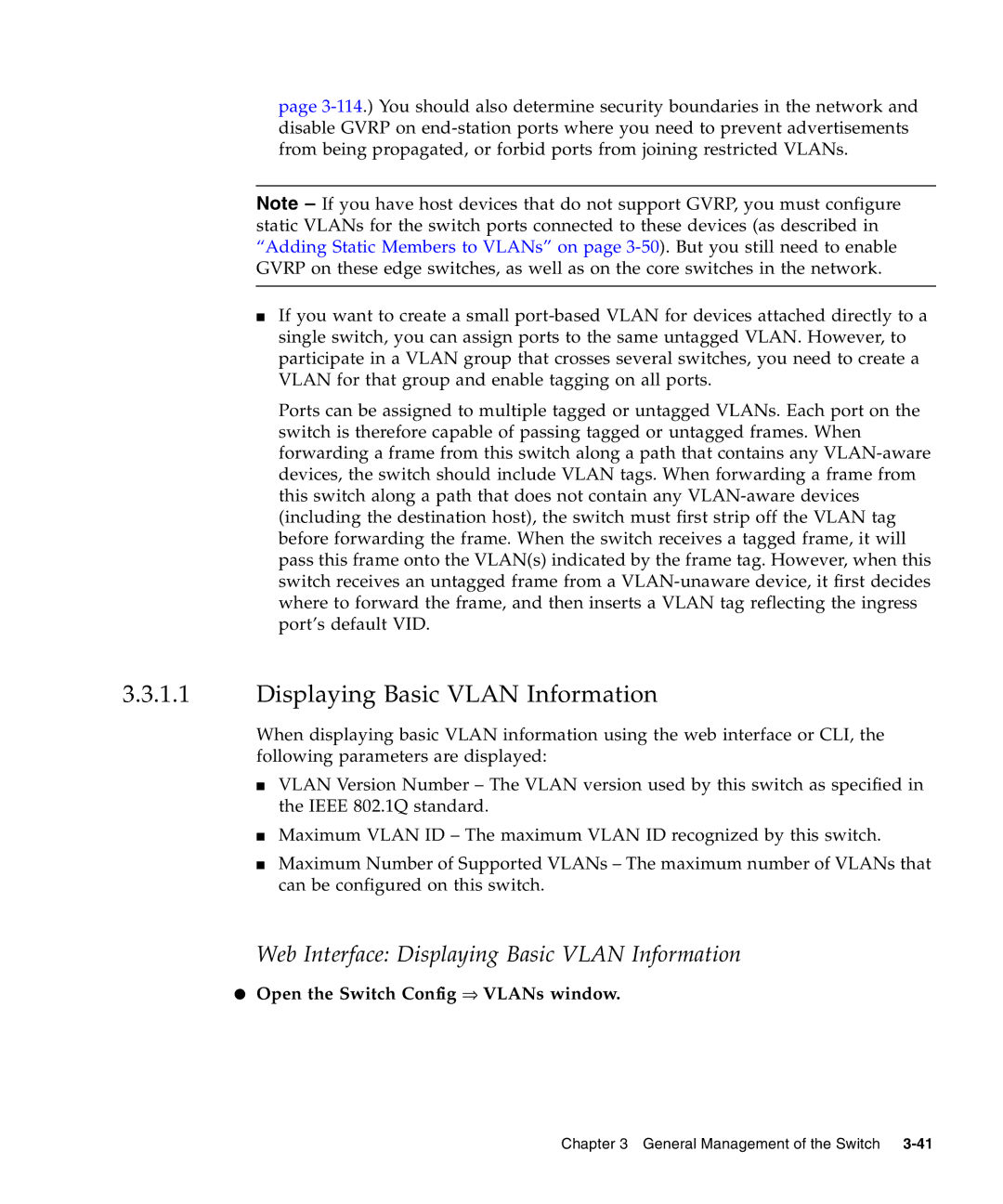
page
Note – If you have host devices that do not support GVRP, you must configure static VLANs for the switch ports connected to these devices (as described in “Adding Static Members to VLANs” on page
■If you want to create a small
Ports can be assigned to multiple tagged or untagged VLANs. Each port on the switch is therefore capable of passing tagged or untagged frames. When forwarding a frame from this switch along a path that contains any
3.3.1.1Displaying Basic VLAN Information
When displaying basic VLAN information using the web interface or CLI, the following parameters are displayed:
■VLAN Version Number – The VLAN version used by this switch as specified in the IEEE 802.1Q standard.
■Maximum VLAN ID – The maximum VLAN ID recognized by this switch.
■Maximum Number of Supported VLANs – The maximum number of VLANs that can be configured on this switch.
Web Interface: Displaying Basic VLAN Information
●Open the Switch Config ⇒ VLANs window.
Chapter 3 General Management of the Switch
